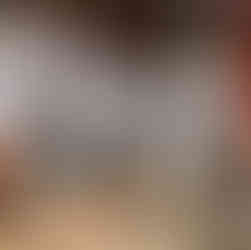Bungamati and Khokana
- Dec 28, 2022
- 3 min read
September 20, 2019 from the Itinerary: This morning visit Kathmandu’s southern farming villages Bungamati and Khokana. Situated in southern Kathmandu, Bungamati is a small typical Newari village still abiding its tradition as their significant part of life. Very less influenced by the modern city just a few kilometres far from the village, Bungamati exemplifies true beauty of the still living age old culture and civilization. Walking down the lanes of Bungamati, you will pass through local Newari people busy working intricate designs in wood or stone on their way to creating many more beautiful artifacts keeping their talents running for the future generations to enjoy. Slightly bigger than Bungamati, Khokana is famous for its mustard-oil manufacturing. It is worthwhile to seek out one of the village's oil presses, located in poorly lit factories with medieval atmosphere. The streets are brick and stone-paved, the main street is remarkably wide; it was built after the 1934 earthquake. The village's main temple is dedicated to the goddess Shekali Mai, also known as Rudrayani, one of the Valley's nature goddesses. This is another area that was badly damaged by the earthquake. Later visit Patan City & Museum. Patan City: Like its counterpart in Kathmandu, Patan Durbar Square is located in the heart of the city and was once the palace of the kings of Patan. The square is an artistic courtyards and graceful pagoda temples – a display of Newari architecture that had reached its pinnacle during the reign of the Malla kings. The Krishna Temple, built entirely of stone, is said to be the first specimen of Shikhara-style architecture in Nepal. Patan Museum is situated in the heart of the city, constitutes the focus of visitors’ attraction. The square is full of ancient palaces, temples and shrines, noted for their exquisite carvings. This is the first public museum in Nepal that has been created as an autonomous institution of this type.

Here is a shot of the map for where the different places were on today's excursions. I hadn't realized we went quite so far out. The city is quite sprawled and spread out. It looks like there was little city planning.
Especially as you see the telephone infrastructure. It reminded me of photos of places in India - quite a tangle of wires.
We stopped to look at the view on our way to Bungamati and you could see the urban sprawl and air pollution.
The local agriculture, open space and old architecture are disappearing as farmers sell up and move to the city for an "easier" life. There is also still evidence of the earthquake as one walks through Bungamati. There is still some of the older buildings and locals working on local crafts, but quite a contrast between old and new.
Here are pictures of the olive oil factory. I had a nice conversation with two women working in their small factory.
There are so many pools throughout the different destinations of the day. These were used for religious purposes, but also for bathing and probably for drinking. The water is always green - not particularly inviting for me.
The Patan Museum had some wonderful examples of local sculpture.
Patan City had palaces with beautifully carved buildings and courtyards, some of which had areas which were used for animal sacrifice.
There were still areas under repair from the 2015 earthquake with scaffolding and support structures.
There appears to be "no love lost" between the Nepalese and the Indians. Interesting as their cultures seem so intertwined.
My last night sleeping on my own - tomorrow I start the EBC trek and share a room






























































































Comments